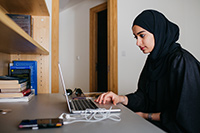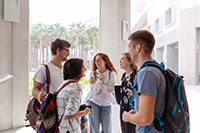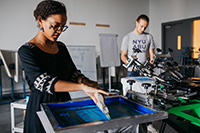Original article
August 26, 2020
Campus reopenings will require innovation and determination
NYU Abu Dhabi’s vice-chancellor explains how her institution kept its campus open during the pandemic and what others can learn from this experience
Universities across the world are now embarking on a grand experiment – starting a new academic year while the Covid-19 pandemic continues to spread.
Approaches to the task run the gamut from full in-person operations to hybrid models and all-virtual learning. Many universities have indicated an understandable desire to start as much in-person activity as possible, although coronavirus is far from under control in many parts of the world.
The stakes are high, and for some institutions, the path taken and the ability to navigate it successfully could determine their ultimate viability. Fortunately, at NYU Abu Dhabi, we can draw lessons from recent experience in which students largely remained on campus at the height of the pandemic – in contrast with the situation at the many institutions that shuttered premises in mid-March.
When we took our courses online, most of our 1,450 students, who hail from nearly 120 countries, remained in their residences. It felt scary at first, but we found that with constant planning, communication and evaluation, we could maintain academic continuity and community even as circumstances shifted constantly.
While we benefited from our modest size and the nimbleness that comes with relative institutional youth, I believe this potential for campus continuity exists in all but the most terribly affected locations.
We learned that when a university goes online, a sense of campus community becomes even more important. Our faculty and students reported a strong feeling of responsibility for their classes and took comfort in knowing that most of the participants were nearby. Small numbers of people could interact at a distance in labs and studios. While walking about getting exercise, food or fresh air, community members would spot friends and colleagues, providing brief moments of contact that reminded us that we remained a learning community.
A less surprising takeaway was that it is impossible for leaders to over-communicate when a campus faces a threat as disorienting as Covid-19. With a steady flow of emails, phone calls and Zoom town halls, we found that empathy can travel virtually and that online gatherings reduce anxiety and help faculty, students and staff find their footing.
For all campuses, the new prescription – test, trace, isolate, repeat – sounds logical and perhaps even easy. We kept saying it too, but in practice it is hard to implement. When a positive test is returned, the tracing regimen, which is difficult, may require the isolation of dozens of students or staff, or several floors of a building.
As universities reconvene this autumn, broad testing of campus communities may run into cost challenges and concerns about the process and privacy. General health surveillance is the critical next move for universities – a drastic move, in some eyes, but one that will create confidence that we can safely interact with others in all settings. None of our community members who have symptoms has refused a test thus far. We have now begun to pilot broader interval screening of asymptomatic community members using high-sensitivity testing of saliva. This approach may mitigate cost as well as worries about discomfort and personal data.
No educator wants to repeat what we had to do in March: switch mid-semester from in-person to remote instruction. It is more palatable to layer familiar campus experiences on to an online model as the semester unfolds than to strip them away. As travel continues to be restricted, we do not anticipate all our international community members to be able to come to Abu Dhabi but even if they can, we will have a less dense campus environment and our courses will be online. Our “Remote Plus” model will also provide virtual arts programmes, public talks, research seminars, mentoring services and student interest meetings, allowing thousands to participate around the globe.
Over the course of the autumn and winter break, we intend to bring most of our scholars and students back for the spring semester if health and travel restrictions allow. We see plenty of pluses in being on campus even if most courses are online. As most of our classes are small, some courses may gather in person while others join by Zoom. With carefully scheduled access to studios and labs, STEM and art courses can transcend some of the limitations of remote learning.
To have a positive academic year, all of us need to shift the narrative of remote instruction as a deficit to one of strength, resilience, and innovation in extraordinary times. There is a plus to maximising technology for creative teaching and research and devising new models of co-creative teaching. Some students interact more confidently through online platforms, and staff have discovered new ways of attending to what students need.
We have to maintain open dialogue about what’s working for students and faculty and what’s not and be flexible enough to make changes in real time. These upsides to virtual learning will extend beyond this crisis as our students prepare to enter a culture of work where the benefits of the remote office have already become apparent.
As universities, we need to be confident about the hope, aspiration, and relevance we can offer our students. They have staked their future on us, and they do not want to put their lives on hold indefinitely.
 Your journey to NYUAD starts here. Attend an application workshop or information session.Admissions Events
Your journey to NYUAD starts here. Attend an application workshop or information session.Admissions Events Live the possibilities. Be part of a dynamic community of students from over 115 countries.Take a Tour
Live the possibilities. Be part of a dynamic community of students from over 115 countries.Take a Tour